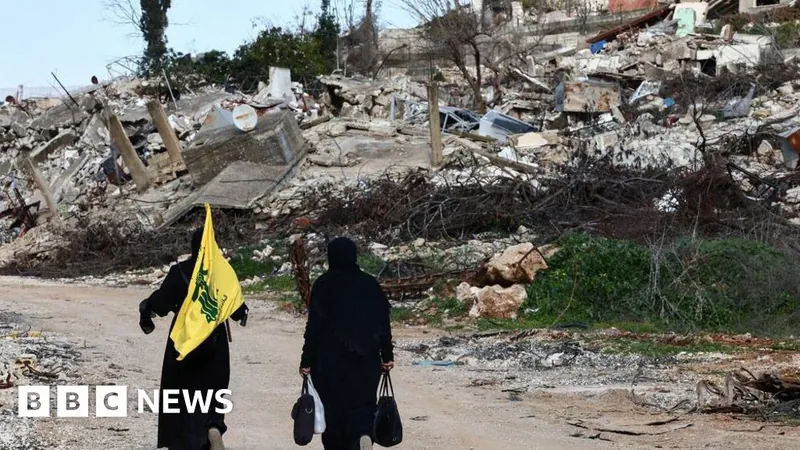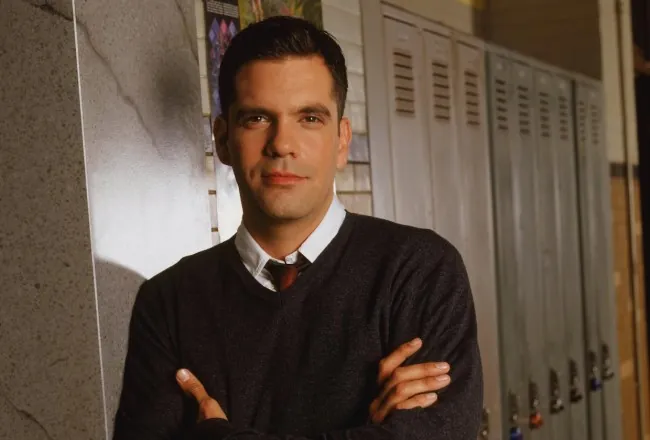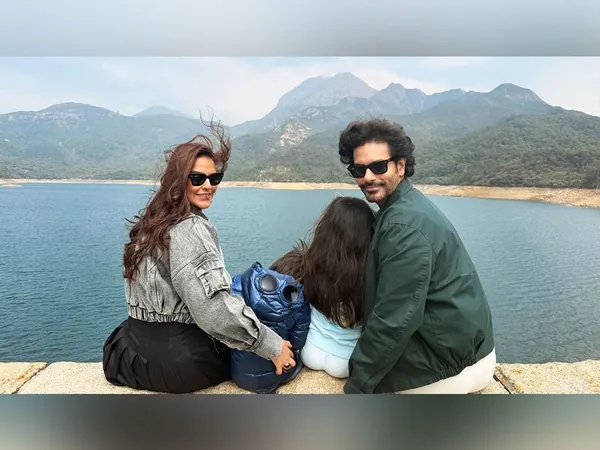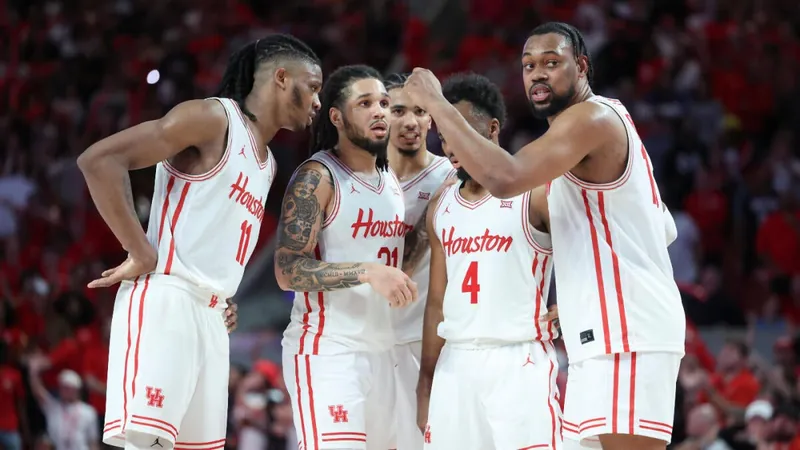
Hezbollah at a Critical Juncture: Struggling to Maintain Influence After War-Inflicted Setbacks
2025-04-04
Author: Chun
Introduction
In the aftermath of a devastating conflict, Hezbollah, the influential yet controversial Lebanese Shia militia, is facing mounting challenges that threaten its very existence. Once considered a formidable military force, the group has been significantly weakened by a relentless Israeli bombing campaign and the shifting political landscape that has left its supporters disillusioned.
A Personal Perspective
Take Adam, a nurse in southern Lebanon who was recently caught in an explosion triggered by a pager distributed to Hezbollah members. Initially intended for emergency alerts, the pager contained a hidden explosive devised by Israel as part of an intricate plan that has left Adam severely injured—having lost three fingers and being blinded in one eye. "Despite everything, I still support Hezbollah," Adam proclaimed, attributing his suffering to a noble cause. This snapshot of resilience echoes the sentiments among many of Hezbollah’s loyalists, even as they grapple with the harsh realities brought on by escalating violence.
Historical Context
Hezbollah originated during the Lebanese Civil War in the 1980s, fighting against Israeli occupation. Over time, it evolved into a multifaceted organization, entwining military, social, and political threads within Lebanese society. However, the recent hostilities have catalyzed a dramatic review of the group’s strategies and capabilities. The aftermath of the Israeli bombardments not only killed thousands of people, including civilians, but it also obliterated significant parts of Hezbollah's military leadership and infrastructure, including the assassination of long-standing leader Hassan Nasrallah.
The Current Conflict
The current conflict erupted after a series of events initiated by Hamas' attacks on Israel, leading to wide-scale retaliation that embroiled Lebanon. As the Israeli military intensified its operations, Hezbollah found itself unable to provide the level of support expected by its base, leaving many supporters questioning the group's role and future. While the war has united some around the cause, it has also been a source of bitter dissent among others who criticize the leadership for committing to a war without adequate consideration of its consequences.
Reconstruction Challenges
Reconstruction demands are soaring, with costs from the conflict estimated at around $11 billion, exacerbating feelings of discontent among Hezbollah supporters. Although the group has provided a limited financial cushion to help those affected, many are voicing concerns about the inadequacy of these measures in the face of their lost homes and livelihoods.
Iran's Role and Regional Pressures
Moreover, Iran—a key ally and benefactor of Hezbollah—faces its own set of challenges, including regional pressures to curtail support for groups like Hezbollah. With international allies seeking to diminish Iran's financial influence and military reach, Hezbollah may find its future funding and weapon supply at risk. This precariousness raises questions about Hezbollah's capability to maintain its military posture while navigating a path toward reconstruction in Lebanon.
Political Developments
On the political front, recent elections have ushered in a new president, Joseph Aoun, who has signaled a potential shift in policy regarding the disarmament of militias. Critically, he emphasizes the need for the Lebanese armed forces to serve as the sole custodian of weaponry in the country—a direct challenge to Hezbollah’s autonomy and military presence.
Internal Fractures
Internally, fractures are beginning to show, with dissent amongst Hezbollah's ranks regarding the strategic decisions taken by leadership. As some supporters express their dissatisfaction with the militant approach, others deeply feel their identities are intricately linked to the militia’s legacy.
Future Challenges and Considerations
As Hezbollah grapples with these existential threats, discussions about potential disarmament and integration into the Lebanese army are anticipated to be fraught with complexities. A source close to the organization hinted that the group may explore avenues for its arsenal to be state-controlled while navigating the tumultuous path ahead. “Without a clear and empathetic plan, transition would spark conflict within Lebanon,” warned a businessman, hinting at the potential for internecine disputes to erupt should Hezbollah supporters feel abandoned.
Conclusion
While Adam and others remain steadfast in their identification with Hezbollah, the group's future is increasingly uncertain. The question looms large: can Hezbollah adapt to the changing landscape or will it be unable to navigate these complex waters, inviting its own demise in the process? Observers watch closely as the intricate dance of power, identity, and loyalty unfolds in a region marked by decades of turmoil.



 Brasil (PT)
Brasil (PT)
 Canada (EN)
Canada (EN)
 Chile (ES)
Chile (ES)
 Česko (CS)
Česko (CS)
 대한민국 (KO)
대한민국 (KO)
 España (ES)
España (ES)
 France (FR)
France (FR)
 Hong Kong (EN)
Hong Kong (EN)
 Italia (IT)
Italia (IT)
 日本 (JA)
日本 (JA)
 Magyarország (HU)
Magyarország (HU)
 Norge (NO)
Norge (NO)
 Polska (PL)
Polska (PL)
 Schweiz (DE)
Schweiz (DE)
 Singapore (EN)
Singapore (EN)
 Sverige (SV)
Sverige (SV)
 Suomi (FI)
Suomi (FI)
 Türkiye (TR)
Türkiye (TR)
 الإمارات العربية المتحدة (AR)
الإمارات العربية المتحدة (AR)